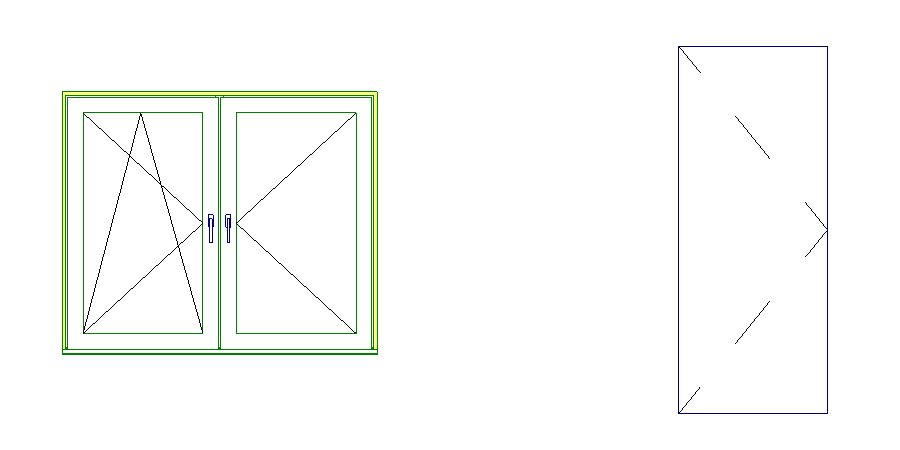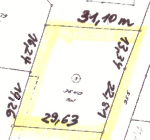Lat Long to Metres and Duplicate Legend Component
Today, we discuss duplicating legend components in Python, my own non-API Python work and some undocumented utility methods:
- Duplicate legend component in Python
- Convert latitude and longitude to metres in Python
- UIFrameworkService utility methods
Before diving into that, here is yet another interesting discussion related to the frequently repeated advice that exceptions should be exceptional:
Duplicate Legend Component in Python
In a comment on
the workaround to duplicate a legend component,
Oliwer Kulpa demonstrates how to set the LEGEND_COMPONENT built-in parameter after copying a legend component:
Question: Any news about this Legend Component API? Is there any way I can at least do a Symbol Swap inside the Legend View?
I'm trying the following code:
element1.get_Parameter(
BuiltInParameter.LEGEND_COMPONENT )
.Set( element2.Id );
However, that produces an error saying, The component you have selected is not visible in the selected view.
Solution: I found out that you need to feed FamilyType.Id when setting up a copied legend component:
CopiedLegendComponent.get_Parameter( BuiltInParameter.LEGEND_COMPONENT ) .Set( FamilyType.Id )
It worked for me!
Since it is a part of a larger Python Script in Dynamo, I've extracted the following code fragment which works on a legend view with one single legend component.
I hope it is readable enough for everyone:
doc = DocumentManager.Instance.CurrentDBDocument
current_view = doc.ActiveView
# Get legend component in current view
existing_legend_component = FilteredElementCollector(
doc, doc.ActiveView.Id)
.OfCategory(BuiltInCategory.OST_LegendComponents)
.FirstElement()
# Get door family type id
door_family_type = FilteredElementCollector(doc)
.OfCategory(BuiltInCategory.OST_Doors)
.WhereElementIsElementType()
.FirstElement()
# Start Transaction
TransactionManager.Instance.EnsureInTransaction(doc)
# Copy legend and set new Id to represent new element
new_legend_component = ElementTransformUtils
.CopyElement(doc, existing_legend_component.Id,
XYZ(10, 0,0))
# The result of CopyElement is a list of Ids,
# so fetch the first element from copied elements
doc.GetElement(new_legend_component[0])
.get_Parameter(BuiltInParameter.LEGEND_COMPONENT)
.Set(door_family_type.Id)
doc.Regenerate()
# End Transaction
TransactionManager.Instance.TransactionTaskDone()
Here is a picture of the result of copying a window legend component and setting it to a door family type:

Many thanks to Oliwer for sharing this useful discovery.
Convert Latitude and Longitude to Metres in Python
I fiddled around a bit with Python myself last week to convert latitude and longitude values to real-world length in order to verify their validity.
I tried three different conversion methods and compared their results to the expected property border edge lengths.
The results are preserved and presented in the geolocation_waldrain GitHub repository.
To begin with, I had six unconfirmed latitude and longitude coordinates for the six corner points of the plot.
I also had pretty precise edge length and area measurements in metres:

That leads to the following data:
pts = [
[47.61240287934088,7.668455564143808],
[47.61238603493116,7.66886803694362],
[47.61227235282722,7.668805013356426],
[47.612081232450755,7.668710772100395],
[47.61209766306042,7.668317607008359],
[47.612263038360155,7.668392271613928]]
tags = ['NW','NO','OM','SO','SW','WM']
edge_length = [ # in metres
31.10, # Nord
13.34, 22.51, # Ost
29.63, # Sued
19.26, 16.24 ] # West
area = 1043 # square metres
I found a couple of articles describing how to calculate the distance in metres between two points given their latitude and longitude.
The simplest suggestion is to apply the Haversine formula, assuming that the Earth is a sphere with a circumference of 40075 km.
In that case, the length in meters of 1 degree of latitude is always 111.32 km, and the length in meters of 1 degree of longitude equals 40075 km * cos( latitude ) / 360.
More precise calculations are suggested by the following three articles:
- How to convert latitude or longitude to meters?
→ Calculate distance, bearing and more between Latitude/Longitude points - How to convert latitude or longitude to meters?
→ Solution suggested in Wikipedia on the geographic coordinate system - Understanding terms in Length of Degree formula
Here is the result of calculating the distances between along the edges between the six given points and comparing with the given edge lengths:
Edge | Given | 1. | 2. | 3. NW - NO | 31.10 | 31.01 (-0.09) | 30.96 (-0.14) | 31.07 (-0.03) NO - OM | 13.34 | 13.38 (+0.04) | 13.36 (+0.02) | 13.37 (+0.03) OM - SO | 22.51 | 22.55 (+0.04) | 22.52 (+0.01) | 22.53 (+0.02) SO - SW | 29.63 | 29.56 (-0.07) | 29.51 (-0.12) | 29.62 (-0.01) SW - WM | 19.26 | 19.24 (-0.02) | 19.22 (-0.04) | 19.23 (-0.03) WM - NW | 16.24 | 16.28 (+0.04) | 16.25 (+0.01) | 16.26 (+0.02)
The third algorithm seems to return the most precise results, assuming the given points and edge distances are correct to start with.
Next, I used the metre-based X and Y coordinates produced by the third algorithm to also calculate the area and compare that with the expected result.
I tweaked the original latitude and longitude coordinates a bit to reduce the errors, even though I am not sure whether they stem from the coordinates or my processing.
The full report after adding that looks like this:
6 points: NW [47.61240288, 7.66845556] NO [47.6123859, 7.6688685] OM [47.61227361, 7.66880501] SO [47.6120811, 7.6687109] SW [47.6120972, 7.66831761] WM [47.612263, 7.66839227] centre point: [47.612250614999994, 7.668591641666667] edge lengths: NW - NO: 31.10 31.05 (-0.05) 30.99 (-0.11) 31.10 (+0.00) NO - OM: 13.34 13.38 (+0.04) 13.36 (+0.02) 13.37 (+0.03) OM - SO: 22.51 22.56 (+0.05) 22.54 (+0.03) 22.54 (+0.03) SO - SW: 29.63 29.57 (-0.06) 29.52 (-0.11) 29.62 (-0.01) SW - WM: 19.26 19.29 (+0.03) 19.26 (+0.00) 19.27 (+0.01) WM - NW: 16.24 16.28 (+0.04) 16.26 (+0.02) 16.26 (+0.02) area calculated: 1042.28 (error -0.72)
For the complete source code, please refer to the geolocation_waldrain GitHub repository.
UIFrameworkService Utility Methods
While writing the above, I also conversed with Kennan Chen of Shanghai on getting notified when a family type is about to be placed.
He pointed out some interesting functionality that I was previously unaware of in UIFrameworkServices.dll:
Question: Is an event which can notify when Revit is about to place a family type?
There are events like Application FamilyLoadedIntoDocument and FamilyLoadingIntoDocument.
Is it possible to have another event FamilyTypePlacingIntoDocument for this?
Or is there a workaround?
Answer: As recently discussed, you can use the DocumentChanged event to detect the launching of a command.
Response: It works great to catch the placing FamilyType event triggered by placing type directly from Revit UI.
The code I use:
void Application_DocumentChanged( object sender, DocumentChangedEventArgs e ) { var transactionName = e.GetTransactionNames() .FirstOrDefault(); if( transactionName == "Modify element attributes" ) { //element placing var id = UIFrameworkServices.TypeSelectorService .getCurrentTypeId(); if( id > 0 ) { var elementId = new ElementId( id ); var document = e.GetDocument(); if( document.GetElement( elementId ) is FamilySymbol familySymbol ) { //Do something with the placing FamilySymbol Console.WriteLine( familySymbol.Name ); } } } }
But when the placing event is triggered by UIDocument PostRequestForElementTypePlacement or PromptForFamilyInstancePlacement, the call UIFrameworkService.TypeSelectorServce.getCurrentTypeId() fails to return the currently placed type.
I also noticed that the Properties panel didn't refresh in this scenario. I guess that's the reason.
Is there another way to get the currently placing type?
UIFrameworkService is provided by a managed DLL in the Revit root folder, like RevitAPI.dll.
I decompiled it and found that method.
I guess this library is used by the Revit UI to interact with Revit native runtime.
The DLL name is UIFrameworkServices.dll
Some other useful method examples:
- I use
QuickAccessToolBarServiceperformMultipleUndoRedoOperationsto support undo operation in my own plugin. - I use
UIFrameworkServiceKeyboardShortcutServiceapplyShortcutChangesto support assigning keyboard shortcuts to custom ribbon items.